Tesla’s patents and its constant pursuit of technology
Author: Potato Fish c
Recently, Tesla submitted a document to the US Securities and Exchange Commission quietly. The 10-K part of the document tells us a fact: Tesla China’s revenue has grown over 100% for two consecutive years.
What makes Tesla truly formidable is that even when it is in the industry’s top position, it can still grow at the fastest speed, leaving you further and further behind.
To achieve this, it relies on Tesla’s persistence in researching and perfecting technology in various fields related to electric vehicles.
Apart from visible achievements, there are also invisible patents.
Tesla has just quietly obtained three new patents.
Better glass cover

Shiny and smooth glass is the most eye-catching element on the car exterior, and transparent glass determines the quality of interior design.
To make the car more beautiful and the screen clearer, all car manufacturers are working hard to produce glass covers with less reflection and more transparency, which requires precise control of the glass surface texture.
If you want to put a specific texture on the glass surface, what method would you think of?
The current mainstream process is as follows: first, heat the glass to the melting state, represented by the oval object with code 110 in the following picture, and then put it into a specific mold for compression, so that the glass becomes the shape of the mold. During this process, the texture on the mold surface, represented by 104 in the following picture, will be pressed onto the glass surface.
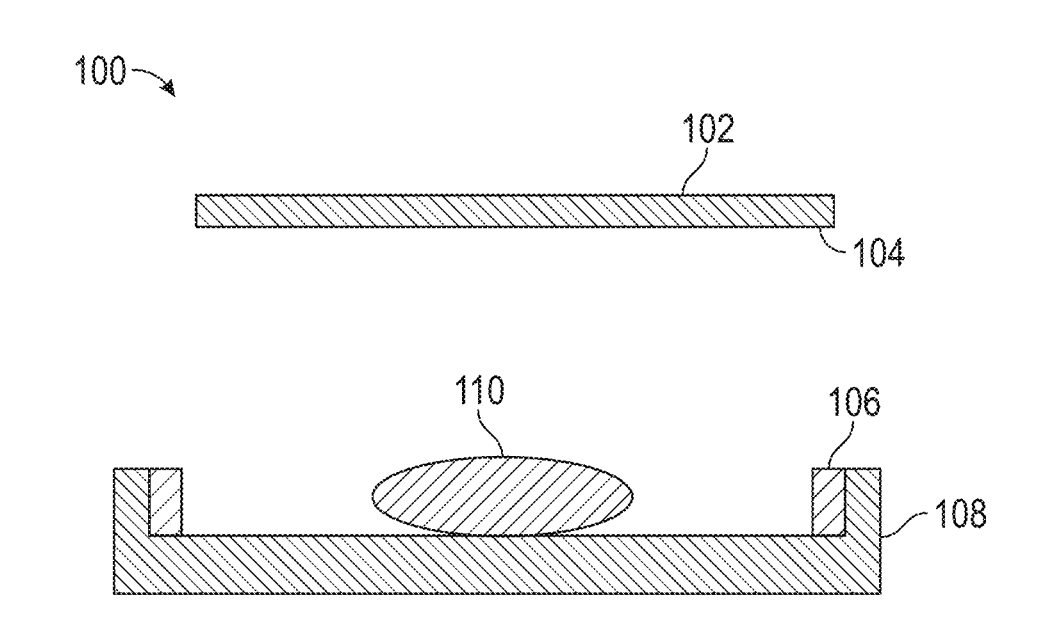
These molds are generally made using methods such as sandblasting, electrical discharge machining, machine working, or laser etching. However, molds produced by these methods have one problem: their accuracy is not high enough.
For example, laser etching is a method of processing that uses laser pulses to carve the surface of a mold to form a mold pattern. A single pulse laser evaporates about 50 microns deep and about 40 microns square material from the mold surface. Continuous pulse laser can carve a continuous pattern. However, it is impossible to etch less than 50 microns accurately.
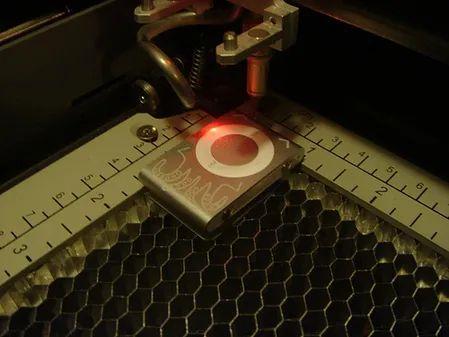
Surface textures at this accuracy level cannot accurately control the glass optical properties, and the glossiness of the glass surface will also be affected.
Tesla’s patents have evolved directly to the hottest concept today—using 3D printing to make mold textures.This makes it possible to achieve highly controllable printed patterns with precision below 50 microns, which means smoother transitions between each texture, and better control over optical properties, resulting in low reflectivity and high transparency for the glass seen in Tesla cars in the future.

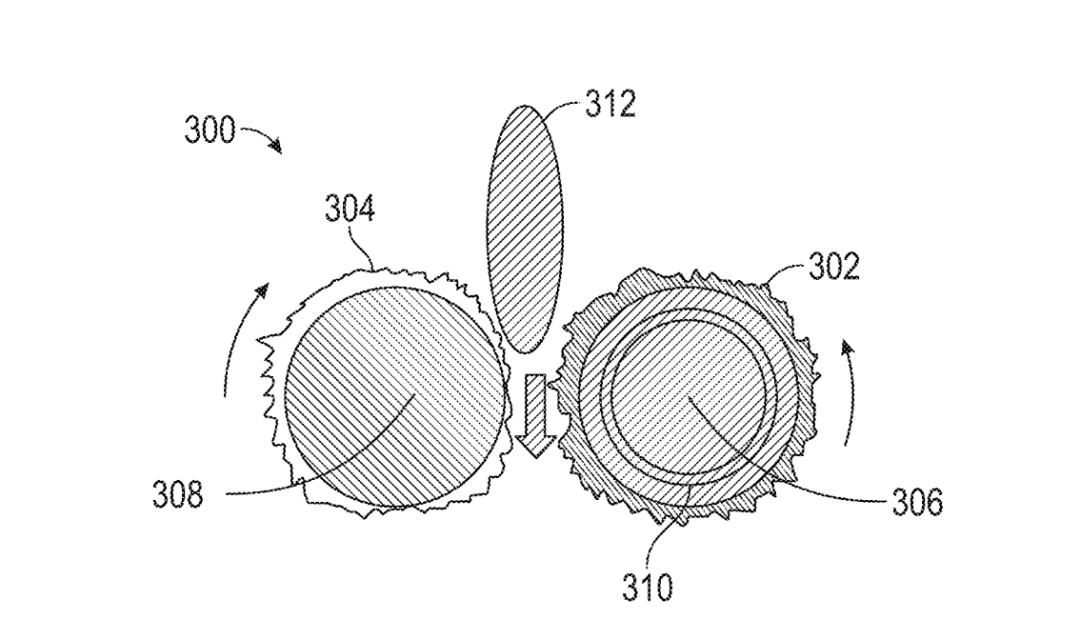
Although Tesla specifically mentions in the patent that the glass produced using this method will be used on roof solar panels, as the technology gradually matures, it is only a matter of time before this technology appears on Tesla’s vehicles.
Safer Battery Pack Encapsulation

Tesla has always had the best battery performance in the industry.
There are many reasons for this result, sometimes it’s chemical achievements such as new battery cells, and sometimes it’s physical efforts such as changing the battery module encapsulation.
This time, Tesla is making strides in encapsulation by addressing several areas such as battery cell encapsulation, cell connection methods, and exhaust structure designs.

- Battery Cell Encapsulation Method
When it comes to battery cells, the most familiar battery packaging form for us is probably the No. 5 battery, which has the positive and negative poles distributed at both ends of the battery. This design is intended to prevent the battery from short-circuiting.
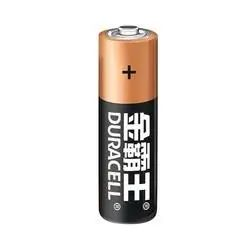
However, this design can make battery assembly into battery packs more inconvenient.
As we know, the rated voltage of a single lithium-ion battery cell is 3.7V, and the fully charged voltage is 4.2V. To form a battery pack with a voltage of 350V and a capacity of tens or even hundreds of kWh, the battery cells need to be paralleled and serialized using metallic strips, and the metallic strips connecting these cells are called “busbars.”

Due to the positive and negative poles being at both ends of a battery cell, when paralleling the cells, the busbars need to be welded to each end of the battery cells separately.
Tesla refers to a group of parallel-connected cells as a “brick.” Please remember this concept.It’s not too difficult to connect these bricks, but the problem arises when the positive electrode of one brick needs to connect to the negative electrode of another brick in series.
To achieve this, one brick needs to be placed with its positive electrode facing upwards, while the other brick that needs to be connected to it must be placed with its positive electrode facing downwards, as shown in the diagram below. This way, the positive and negative electrodes of the two bricks are on the same plane, thus completing the connection.
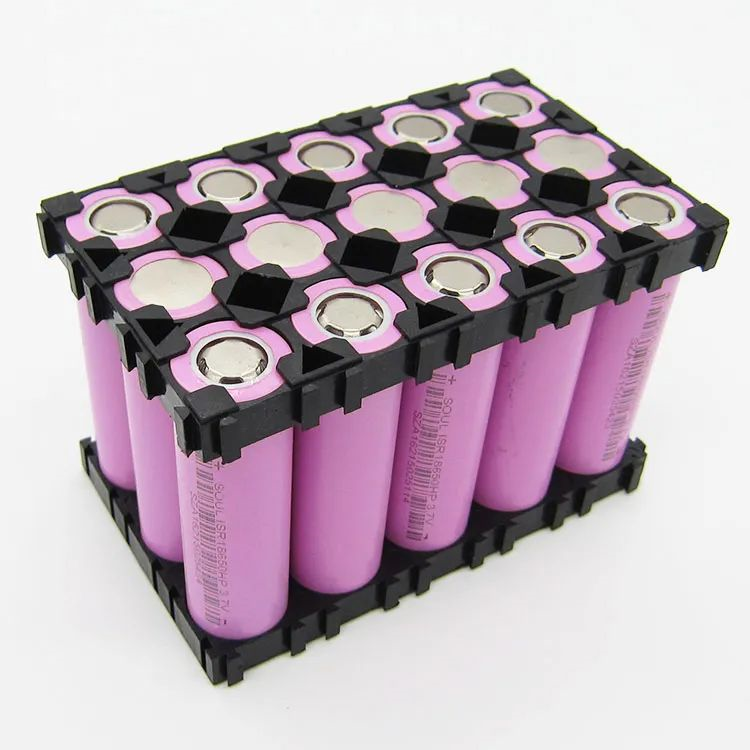
In this patent, Tesla demonstrated a different battery cell packaging method from the previous one. As shown in the diagram below, 106 is the positive electrode of the cell, and the negative electrode extends from the bottom of the cell 104 along the side of the cell towards the positive electrode, eventually wrapping around a part of the top of the cell 108. Tesla vividly refers to this part as the “shoulder” of the cell.
After completing this operation, the positive and negative electrodes of the cell are on the same plane, separated by an insulating ring 112.

- Battery Cell Connection
Now that the positive and negative electrodes of the battery cells are on the same plane, when connecting them in series or parallel, the cells can all be oriented in the same direction, eliminating the need to flip them over.
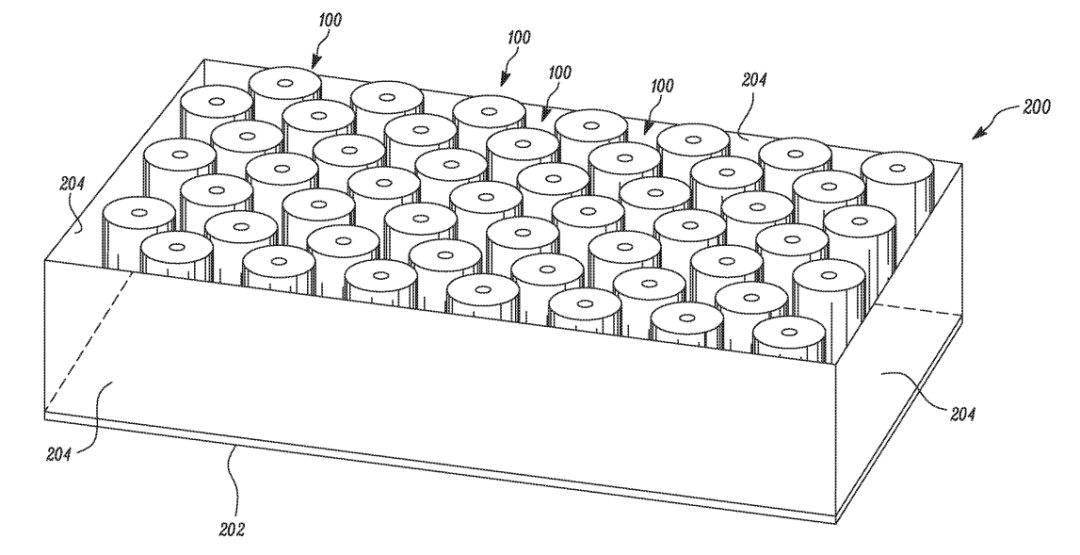
Parallel connections between cells have also become much simpler. As shown in the diagram below, cell parallel connections are completed by using two interlocking busbars. The positive electrode of the cell is connected to the positive busbar 602 via connecting wire 604, while the negative electrode of the cell is connected to the negative busbar 600 via connecting wire 606.

When the negative busbar of the previous brick is used as the positive busbar of the next brick, the two bricks are connected in series.
As shown in the diagram below, each dashed box contains cells that make up a brick. The negative busbar of the right brick is used as the positive busbar of the left brick, connecting the positive electrodes of all the cells in the left brick, and naturally forming a series connection between the two bricks.
Next, this relationship is extended by copying, forming the entire battery pack connection diagram.

This design can reduce costs and improve efficiency for battery pack production.
- Exhaust structure
When a single battery cell malfunctions, it will spray high-temperature gas outward, which is often corrosive. The high-temperature and corrosive gas accumulates inside the battery pack, which may cause other normally functioning battery cells to fail and turn a problem that originally only involved one battery cell into a fault of the entire battery pack.
To solve this problem, Tesla mentions a structure design for exhaust in this patent, which can discharge the gas sprayed out due to battery cell malfunctions and guide these gases to locations that will not affect other battery cells.
This design is arranged on the top cover plate of the battery pack. The cover plate covers the top of all the battery cells, and Tesla designs several low-strength areas that are susceptible to damage on the top plate, which can be regular hexagons or other shapes, and whose thickness is much thinner than other normal areas of the cover plate. When a battery cell malfunctions and sprays out gas, the pressure inside the battery pack increases, and these low-strength areas will crack and thus discharge the gas.

In short, battery packs using this design should not have the phenomenon of pack bulging anymore.
In summary, this patent will improve the production efficiency and safety of the battery pack.
Cooler Charging Gun

With the development of fast charging technology, the voltage and current for charging electric vehicles are increasing. For users, it is certainly a good thing that charging is faster. However, for charging equipment, larger power also means a greater heat load.
Taking the charging cable as an example, although the conductor is a metal, there is still a tiny resistance. According to the formula for calculating the heat dissipation of the resistance learned in middle school, the heat dissipation of the resistance is proportional to the square of the current flowing through the resistance.
 The bigger the current, the more heat is generated, which is a well-known fact.
The bigger the current, the more heat is generated, which is a well-known fact.
One solution to this problem is to use liquid-cooled cables. Tesla has utilized a new type of liquid-cooled cable with a more compact and lightweight structure than the V2 Supercharger when introducing the V3 Supercharger.
Now, Tesla has extended its liquid-cooling technology to the charging gun, as described in the patent. As shown in the following figure, a sleeve, 410, 412, will be installed on the outer side of the two main cable interfaces of the charging gun, i.e. 404 and 406, and then a hollow manifold 414 will be used to wrap the two sleeves together.
As the components are assembled together, a cavity is formed between the sleeve and the manifold. The manifold is equipped with an inlet and an outlet for the cooling liquid to circulate in this cavity, achieving cooling for the charging gun.
It is worth noting that this patent was filed in July 2021, and V3 Supercharger has been deployed for more than a year. It is reasonable to believe that the newly-delivered MegaCharger charging system for Semi trucks and the rumored V4 Supercharger that will accompany the Cybertruck will bring us more pleasure in terms of charging rate and experience.
Clearly, as the competition in the global electric vehicle market intensifies and Tesla’s new factories and products are about to be delivered, Tesla’s wheel will soon enter a new cycle of technology-driven cycle. Tesla’s upcoming technology patents will become increasingly apparent to us.
A bolder speculation is, with more players joining the field and a growing investment in R&D costs, Tesla’s attitude towards patents will evolve from initial development to protection, and the patent war may be imminent.
Get your wallet ready!
This article is a translation by ChatGPT of a Chinese report from 42HOW. If you have any questions about it, please email bd@42how.com.
